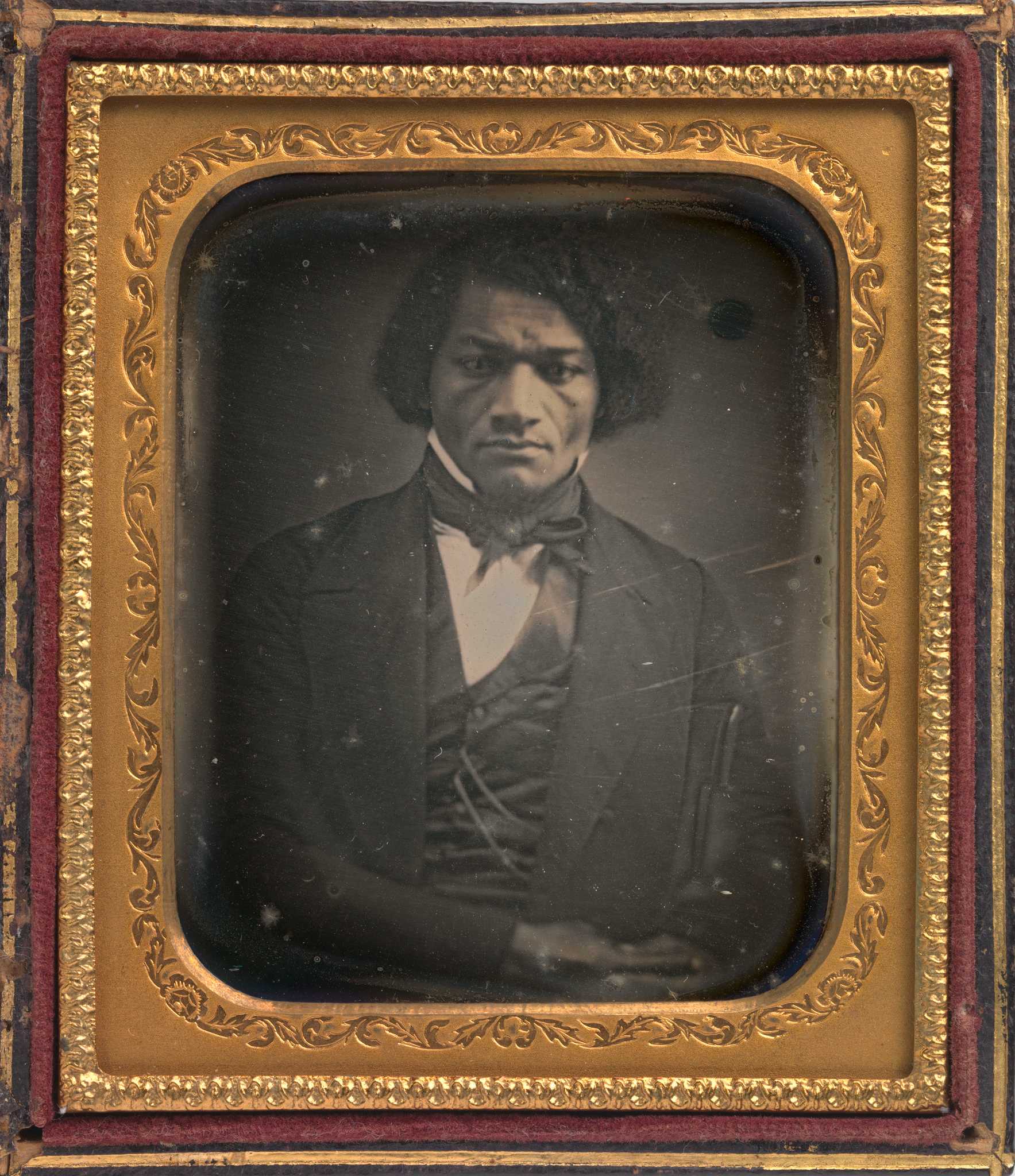Chapter 2
Anti-Slavery in Black & White
In the 1820s African American and white abolitionists began working together to pressure Americans to confront the brutal realities of slavery. Alarmed by the rapid expansion of slavery beyond the Mississippi River, they forged new and unexpected relationships that defied the color line building the abolitionist movement. They carried their concerns to the public arena, declaring freedom for all. They marketed their movement including creating abolitionist papers, publications, logos and promotional products. Within the movement the end of slavery was the call of the day, yet tension regarding Black equality was also present.
As the abolitionist movement gained momentum its successes sparked violent anti-abolitionist backlash, and racism soaked into popular culture, political campaigns, and scientific thought. The result was that no American could avoid the issue of slavery and race.
Anti-Slavery: To Effect Change
American Anti-Slavery Almanac, 1840
Between 1820 and 1861 abolitionists changed America. They were few in number, had little access to political power, and did not always share common beliefs about the future of African Americans. Their tactics also varied. The American Anti-Slavery Society publicized the horrors of slavery. The radical abolitionists reached for political power and endorsed antislavery candidates, Black and white. Others, such as Harriet Tubman and John Brown, took direct action.

I can but die for expressing my sentiments . . . for I am a true born American; your blood flows in my veins, and your spirit fires my breast.
Maria Stewart, 1832
David Hoyt and Bleeding Kansas
Hoyt’s Bloodstained Map, 1856
David Hoyt, a free-soil advocate who fought against the spread of slavery, was shot and killed in Kansas during a dispute with a proslavery mob. This blood-stained map was reportedly in his breast pocket when he died. With so much political, moral, and economic power at stake, many Americans risked their lives over slavery before the Civil War.
Letter to Hoyt’s Parents
Many Americans risked their lives opposing the spread of slavery. The Free Soil Party, formed in 1848, included abolitionists and non-abolitionists who understood the political, economic, and moral power at stake. Their motto was "Free Soil, Free Speech, Free Labor, Free Men." David Hoyt, a free soil advocate, was killed in Kansas during a dispute with a proslavery mob in 1856. In this letter to Hoyt’s grieving parents, fellow abolitionist James F. Legate wrote, "he died that Libirty might come to the oppressed people of Kansas."

Mourn not my friends his untimely fate, for he was a willing sacrifice on the Alter of Freedom.
James F. Legate, Letter to David Hoyt's Parents, 1856
John Brown and Abolition Without Compromise
John Brown, by African American daguerreotypist Augustus Washington
A radical abolitionist, John Brown supported Black people’s willingness to rise up in armed insurrection and pushed white Americans to overcome slavery. He advocated violence to end slavery, leading guerilla antislavery forces in Kansas. In 1859 he organized an armed slave rebellion at Harpers Ferry, in present-day West Virginia. He even wrote a constitution that protected African American rights. A white man, Brown lived in an African American community established by abolitionist Gerrit Smith.
John Brown Pike Head
John Brown declared, "These men are all talk. What we need is action—action!" Brown ordered 1,000 pikes like this to start an armed slave rebellion. His attempted revolt in Harpers Ferry, West Virginia, in 1859 terrified white southerners.
James McCune Smith and Human Equality
James McCune Smith
Born a free man in 1813, James McCune Smith became the first university-trained African American physician. Dr. Smith believed in the power of education. He lectured widely and wrote about citizenship, immigration, suffrage, and elevating the social condition of Black people. Smith used his medical knowledge to dismantle inaccurate scientific claims of African American inferiority. He knew that racial difference was the product of society, not biology. Smith published his rebuttals widely, even challenging Thomas Jefferson’s views on race. He also understood the importance of education in combating these misconceptions. He said, “I have striven to obtain education, at every sacrifice and every hazard, and to apply such education to the good of our common country.”
William Lloyd Garrison and Immediate Abolition
Daguerreotype of William Lloyd Garrison
Garrison introduced many white Americans to abolitionism when he published "The Liberator" and organized the American Anti-Slavery Society. In the first issue of "The Liberator," Garrison wrote, “I am in earnest—I will not equivocate—I will not excuse—I will not retreat a single inch—AND I WILL BE HEARD.” A fierce advocate of immediate abolition, Garrison defied social custom and welcomed Black and white men and women into his organizations. This experience provided many fugitives from slavery with their first speaking and publishing opportunities and encouraged the women’s movement in the United States. Garrison refused to engage with formal politics, stating that the Constitution was a proslavery document.
William Lloyd Garrison’s Watch
Introduction Letter from William Lloyd Garrison, 1851
Sojourner Truth and Black Feminism
Sojourner Truth
Sojourner Truth is most remembered for her speech at the Woman’s Rights Convention in 1851 when she spoke about Black womanhood. No one, she emphasized, could deny that she was a woman and Black. As an enslaved person, she was a Black woman. As a public speaker, she was a Black woman. As a worker facing a day of hard labor, she was a Black woman. To separate her womanhood from her racial experience was to diminish her and other African American women.
Truth preferred photographs to control her image rather than relying on artists. Her use of photography was also strategic; as she stated, “I sell the shadow to support the substance.” She refers to herself, a formerly enslaved woman, as representing the shadow of slavery, and she refers to the substance of her cause, the abolition of slavery.
Frederick Douglass and Political Leadership
Frederick Douglass, ca. 1850
Frederick Douglass is one of America’s greatest leaders for many reasons, including his intelligence, his mastery of the written and spoken word, and his political brilliance. He embraced the true meaning of democracy. When Douglass escaped slavery in 1838, he claimed his human right to freedom. When he became a renowned speaker, publisher, and writer, he went one step further by calling for full citizenship, equal rights, and voting rights for all. Frederick Douglass changed our nation, and his words continue to inspire.
Publishing Power: Fighting for Change
In 1847 Frederick Douglass, with the support of abolitionist William Lloyd Garrison, established an uncompromising and independent political voice with the publication of "The North Star." The newspaper’s motto was, “Right is of no sex—truth is of no color.” The influential newspaper provided a national and international platform for organizing against slavery and for women’s rights. Eventually, interpretive differences marked a major break between Douglass and Garrison. Douglass began to view the Constitution as an antislavery document, while Garrison believed it was proslavery. By 1851, Douglass partnered with abolitionist Gerrit Smith to merge with the Liberty Party Paper of Syracuse and form "Frederick Douglass’ Paper."
The North Star, 1848
Frederick Douglass’ Paper, 1854
